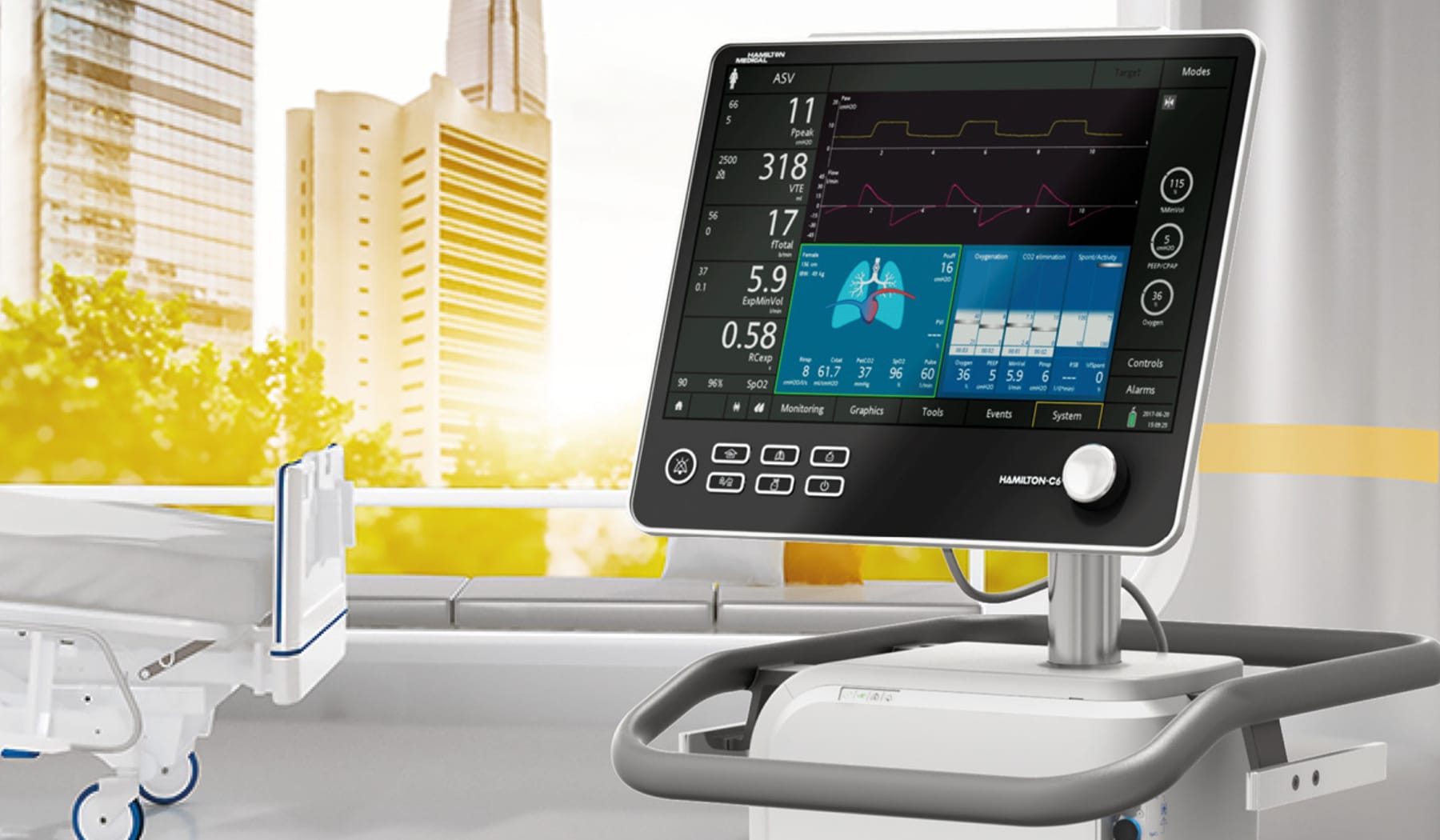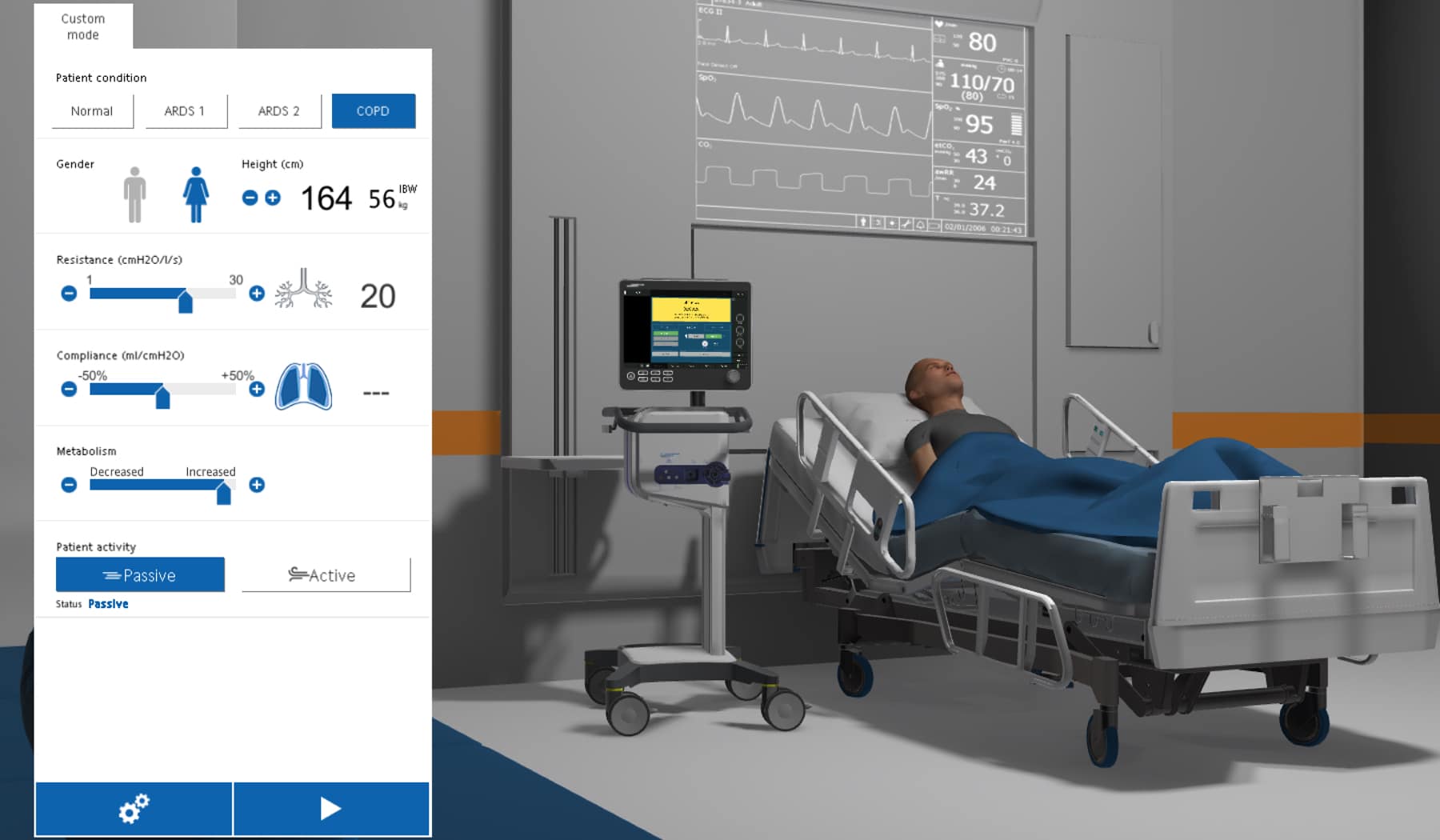A ventilator simulator app for iPad and Mac is helping medical workers quickly learn how to use the life-saving machines during the coronavirus pandemic. The software, originally developed for classroom use, is now being used to train doctors on the fly as demand for ventilators — and professionals who can operate them — soars due to COVID-19.
The free simulator software looks and operates just like the Hamilton-C6, a state-of-the-art ventilator sold by Switzerland-based Hamilton Medical AG, one of the world’s largest medical ventilator manufacturers. Much like a flight simulator for pilots, the iPad app allows medical professionals unfamiliar with mechanical ventilators, or simply rusty after years of not using them, to practice adjusting settings without endangering lives.
“You don’t want to practice on a real patient, so that’s why we developed this simulator that basically provides that interaction,” Alexander Starcevic, director of marketing at Hamilton Medical AG, told Cult of Mac. “It provides you with a real interface that you have on the real ventilator. In addition, you have behind this a patient model that actually responds to what you’re setting.”
Johns Hopkins University currently reports more than 1.4 million confirmed cases of COVID-19 worldwide, with more than 81,860 deaths. In a small percentage of cases, the disease wreaks havoc on the respiratory system. One of the most frightening aspects of COVID-19 is how quickly it can plunge patients into a life-or-death fight.
Ventilators: Essential tools for fighting COVID-19
Ventilators are an essential part of saving lives in the pandemic. According to the Centers for Disease Control, nearly two-thirds of those who are admitted to hospitals with COVID-19 will require ventilation within 24 hours.
“A deteriorating patient in an acute ward on oxygen and intravenous fluids becomes more breathless and they have more difficulty breathing,” said Dr. Graham Nimmo, a critical care consultant with the University of Edinburgh in Scotland. “We measure the oxygen in their blood using a ventilator and that tells us if they need to be moved into a higher-care area. Ventilators and well-trained operators are a very important part of the overall picture of care.”
At present, 80,000 Hamilton Medical ventilators are being used worldwide in the fight to save people infected with the COVID-19 coronavirus. While the scramble for governments and hospitals to acquire additional ventilators makes headlines, finding qualified operators to run the machines presents an additional challenge.
iPad ventilator simulator: Real-world experience
On a real patient or a training dummy, manual ventilation entails forcing air into the lungs using a mask and plastic balloon over the face. The problem with manual ventilation is that health care workers receive no feedback in terms of vital signs like blood oxygenation levels. Mechanical ventilators like Hamilton Medical’s deliver real-time data and allow caregivers to adjust settings as needed.
However, the machines are complicated to use. Simulators for machines allow the operator to tweak certain settings on-screen. The virtual experience lets them see how real patients would respond, without endangering lives.
“So far, there has been a very good response,” said Hamilton Medical’s Starcevic. “What you’re seeing on-screen is the real interface you’re seeing on the ventilator. So if you practice with this and then use the real ventilator, you will immediately find your way around. That’s not to say that you will know how to ventilate a patient, but you are going to know how to use the device.”
Other ventilator simulators
Hamilton Medical is not the only company to create an iOS-based mechanical ventilator simulator. However, its iPad simulator is the only one available from a major manufacturer for a specific model or line of products.
The TruVent app for iPad lets users create complex clinical scenarios on a simulated, ventilated patient. While it doesn’t work with a particular brand of ventilator, it does create a general simulation where an instructor can create a clinical scenario of a sick patient. TruVent is meant primarily for classroom situations and can be used with the company’s true-to-life manikins.
Simulator use with COVID-19
Although the Hamilton Medical simulator was originally made to use in teaching environments, Starcevic said the reality of COVID-19 is proving its use in a different way. With workers overwhelmed at some hospitals, the simulator is being used to train those not as familiar with how ventilators operate.
“I use it myself on the iPad,” he said. “It’s perfect, really. It feels almost like the real ventilator.”
With hospitals locking down operations to prevent the spread of COVID-19 among staffers, Hamilton Medical faces another problem. The company can no longer send in trainers to teach new operators how to use its ventilators. The simulator is helping pick up the slack, Starcevic said.
“We’re hearing from some customers that they are using the simulator app to train doctors that they are recruiting from other fields — like anesthesiologists from the operating rooms — because hospitals are now reducing all scheduled surgeries so that they have more staff available for ventilating COVID-19 patients,” he said.

Photo: Hamilton Medical
As the COVID-19 pandemic nears its peak in the United States, an iPad simulator is an important tool in helping quickly train medical workers on the front line, according to Jack Plump, a critical care consultant based in Dallas, Texas. Plump has worked with the Hamilton Medical simulator and trained intensive care unit staffers after using the software and then working with the mechanical ventilator.
“In a pandemic like this, time is something you don’t have,” Plump said. “A simulator can save valuable time when you don’t have a ventilator to practice on. You’ve got to come in and hit the ground knowing what you’re doing. This simulator helps cut that training time.”
Crisis time: Ventilator demand is high
Starcevic said Hamilton Medical continues to work nonstop to get as many ventilators as possible to its customers worldwide.
“It’s a very challenging situation right now,” he said. “Our first and foremost priority right now is that we can keep up with demand. Even as fast as we produce ventilators right now … we have to make sure they are operating. That is our first priority. Next is increasing our capacity to sell and operate more. In the next few weeks, we will be doubling our capacity of ventilators around the world, but it still may not be enough. It’s basically a huge surge in the market that’s really difficult to keep up with.”
Starcevic said the company currently ships 400 to 500 new ventilators a week.
Ventilator simulator potential
Because of the coronavirus pandemic, Hamilton Medical is learning the value of its simulator training software. The company plans to increase its use moving forward. Starcevic said the company plans to add new simulators for other ventilators, possibly creating new ones in coming weeks.
“We’re just scratching the surface with this simulation software,” Starcevic said. “I think there’s so much potential in it. Once this crisis is over, I think we have some really good ideas how we can grow these simulation solutions.”


